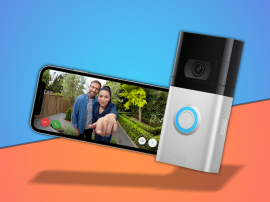Garmin Dash Cam 65W review
This all-seeing eye could help keep your whip on the road
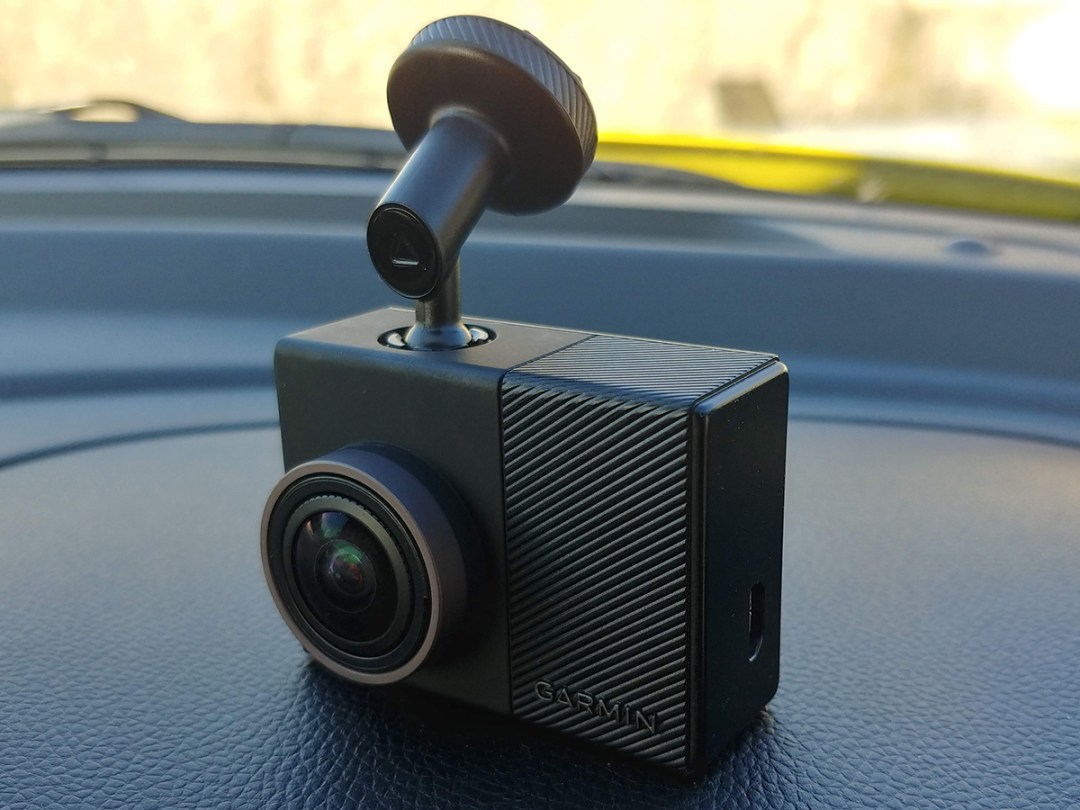
The roads are filled with awful drivers. It doesn’t matter where you live – take your car out for even a short drive and you’re all but guaranteed to spot someone flouting the highway code.
Vehicular insanity might be so commonplace in countries like Russia that dash cams are practically mandatory, but it’s well worth having one here in Blighty, too. You’ll be covered in case you’re involved in an accident, and some insurers will even give you a discount on your premium.
Garmin’s Dash Cam 65W is one of the smallest and most subtle around. Think of it like a tiny GoPro built for your windscreen, without all the flash and bulk of models that were doing the rounds as recently as a year ago.
Camera up front. Screen on back. Buttons on side. Mount on top. Dash cams don’t get much simpler, but behind the basic looks, this one is packed full of features.
Installation: Wire me up
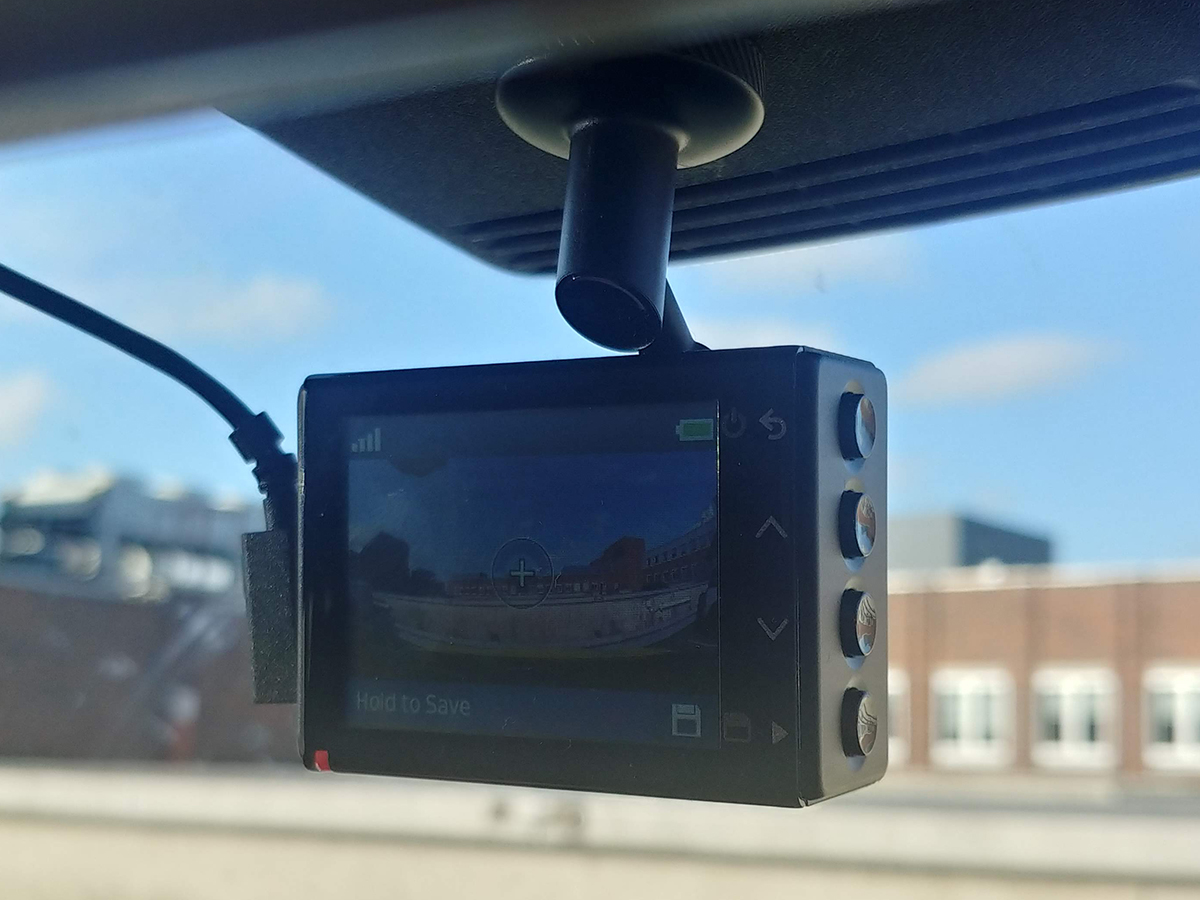
Mounting the Cam 65W is as easy as slapping one of the tiny bundled magnets onto your rear view mirror or headlining – you get two in the box and they have adhesive backs. The equally diddly mount then magnetically clips into place.
The built-in battery is good for about 10 minutes of recording, so you’re really going to want to plug it into your 12V socket. The power cable has more than enough length to run around the windscreen and down to the centre console, meaning there’s plenty whether you want to hide it behind the trim panels or not.
If you want to leave the Cam in place when you’re parked, an optional accessory kit can keep it juiced without the ignition running. It’ll only record clips when it detects movement, so you shouldn’t have to worry about coming back to a flat battery, but you’ll need to hook it into your car’s wiring loom – it’s easy enough for a DIY mechanic.
Otherwise, it wakes up when you start the car, and switches off again when you turn off the ignition. Very neat.
Usability: Going hands-free
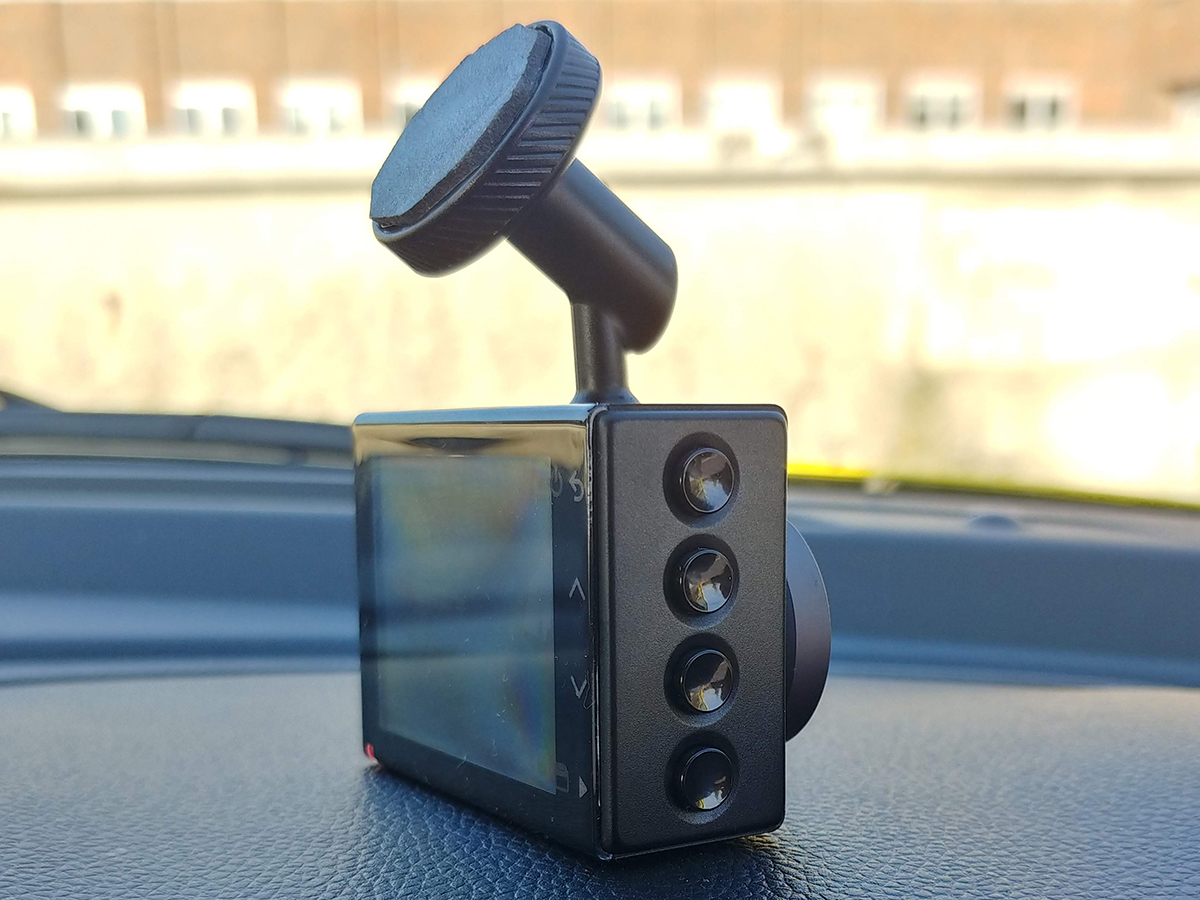
Four handy buttons on the side of the camera let you flip between video recording, still photos and Garmin’s Travelapse mode, a sped-up timelapse that condenses hours of driving into minutes – hopefully making those awkward family movies your Dad insists on showing at Christmas just a tiny bit more interesting.
The screen is bright and easy to read at just about any angle, although at 2in it’s pretty tiny. Try fitting one to a long-wheelbase limo and you’d need binoculars just to see it across the dashboard, but the 99% of people driving ‘regular’ cars shouldn’t have a problem.
Going hands-free is safer than taking your hands off the wheel, of course, and Garmin has you covered here, too. Shout the keyword “OK Garmin” and the camera wakes up, with a list of available commands displayed on-screen.
That’s all fine and dandy in theory, but the detection is so sensitive that just about anything seems able to trigger it. Talking to your passenger? PING. Listening to a podcast? PING. Irritating Radio DJ interrupts yet another dancefloor banger just before the drop? PING.
There’s no option to dial down the microphone, either – it’s on or off, with nothing in between.
Features: Crash-free since ’93
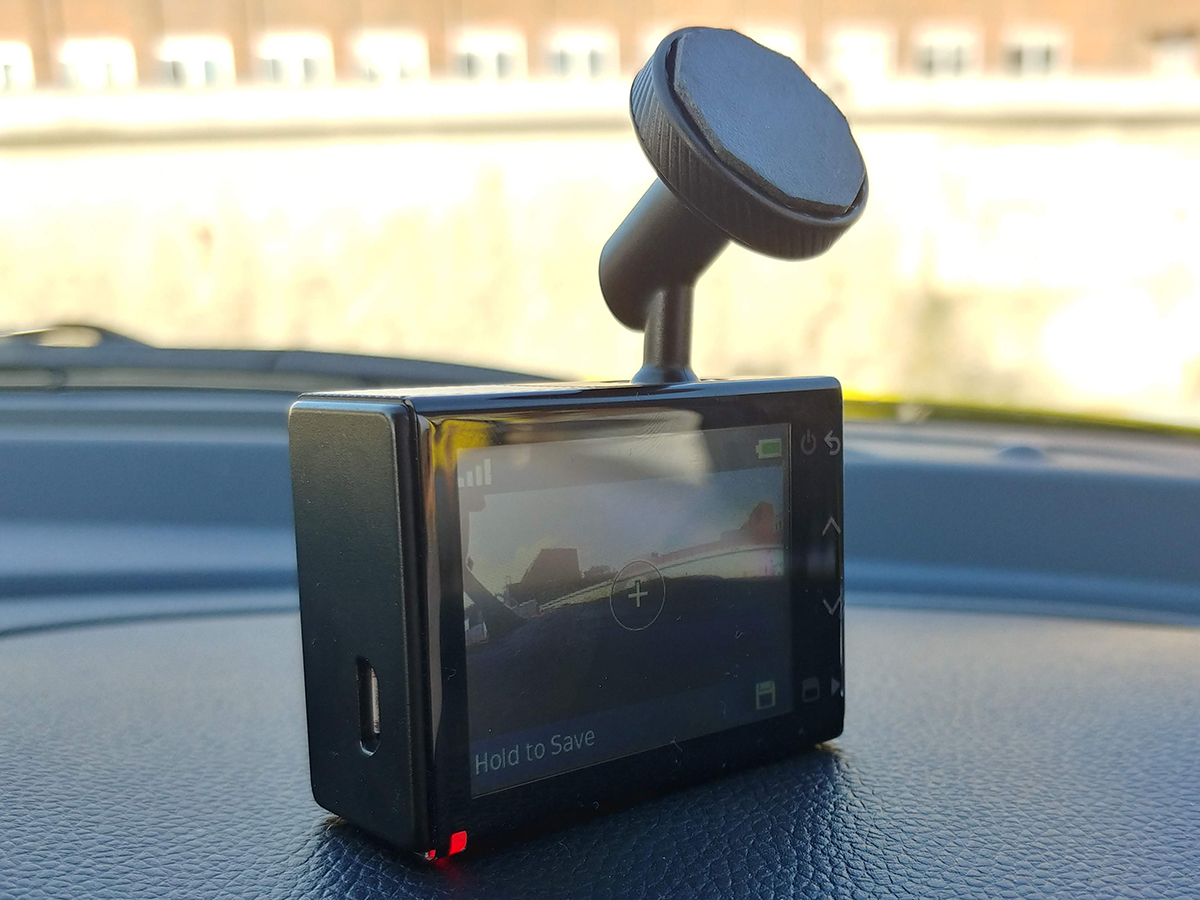
Safety is key to any dash cam, and Garmin doesn’t disappoint with plenty of extras beyond mere recording. A G-sensor automatically saves and locks footage when it detects a crash, with GPS data storing coordinates, direction of travel and your speed, as well as the date and time.
Lane departure warnings and forward collision warnings try to stop you having an accident, rather than just record one happening in real time, which is nice. A “Go” feature keeps an eye on traffic, too, letting you know when to move off at a traffic light.
An optional Cyclops subscription adds red light and speed camera alerts, too. Enable at your peril, though: God help you if you so much as think about exceeding the speed limit. Or drive near a speed camera. Or come across an average speed check. The camera will emit an incessant beeping that’s more shrill than an N-Sync era Justin Timberlake.
Image quality: wide angle and full HD
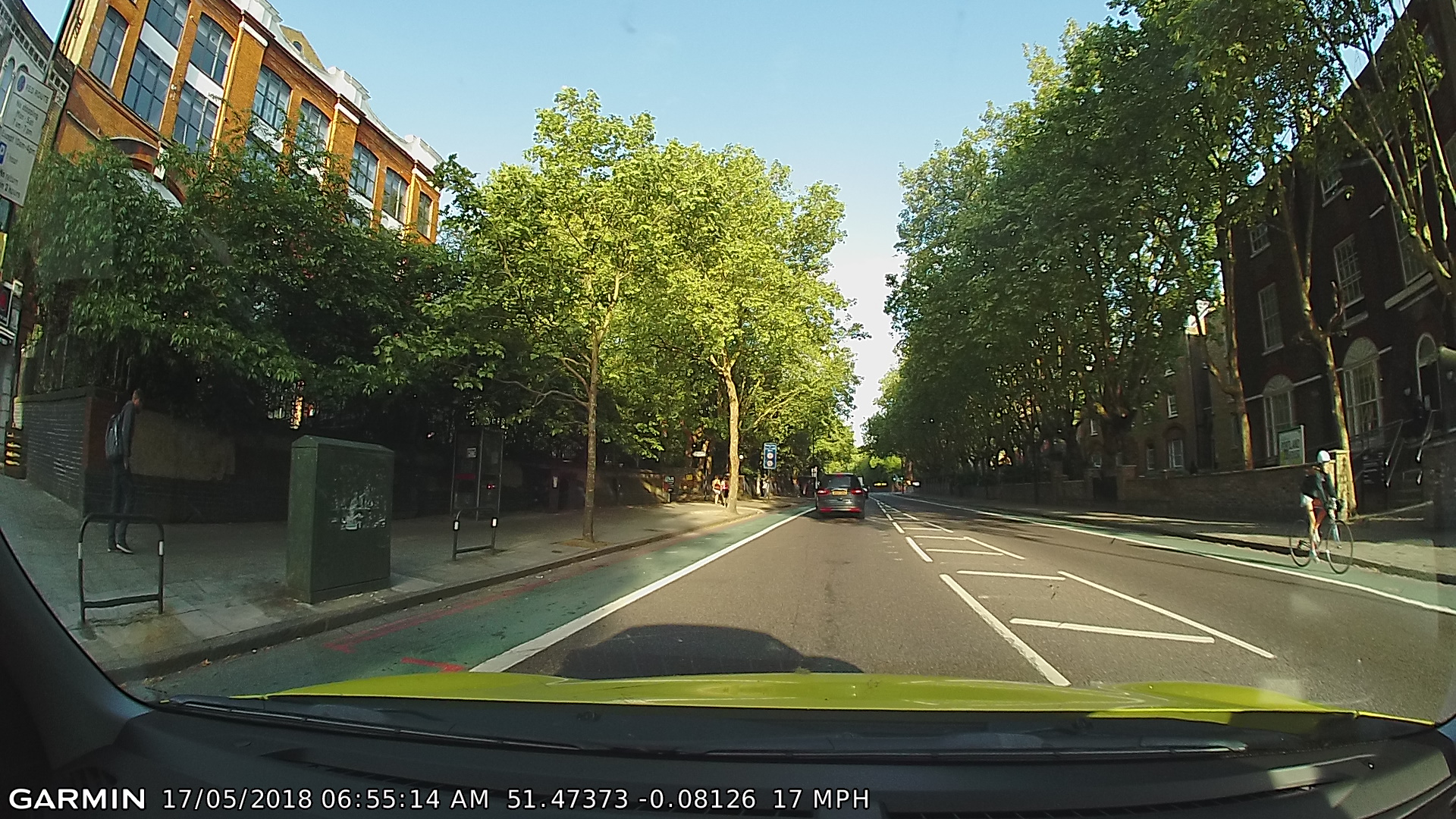
The 180-degree wide-angle lens helps the Cam 65W see multi-lane roads and traffic in the opposite lane much easier than other, narrower cameras, which is ideal for getting the bigger picture in the event of an accident.
It feeds a 2.1MP sensor, which doesn’t sound all that big, but is good enough to record 1080p footage. If storage is an issue, you can drop down to 720p, but it’ll be harder to read number plates at a distance. The aperture is plenty high enough for low-light recording, and the polarised lens helps keep sunlight or oncoming headlights from washing out your footage.
Image quality is generally very good, with clean and naturally exposed footage that makes it easy to read road signs, number plates and other small details without having to do any CSI-style “zoom and enhance” nonsense.
It’s not the highest resolution dash cam out there, but the details are good enough here that your clips will be admissible to an insurance claim should you need to make one.
Your clips are saved to microSD card, but the Cam 65W only ships with an 8GB card. Seeing how 16GB cards are cheaper than a pint of beer now, this feels a little miserly – but then again, few dash cams come with one at all.
App control: Wireless woes
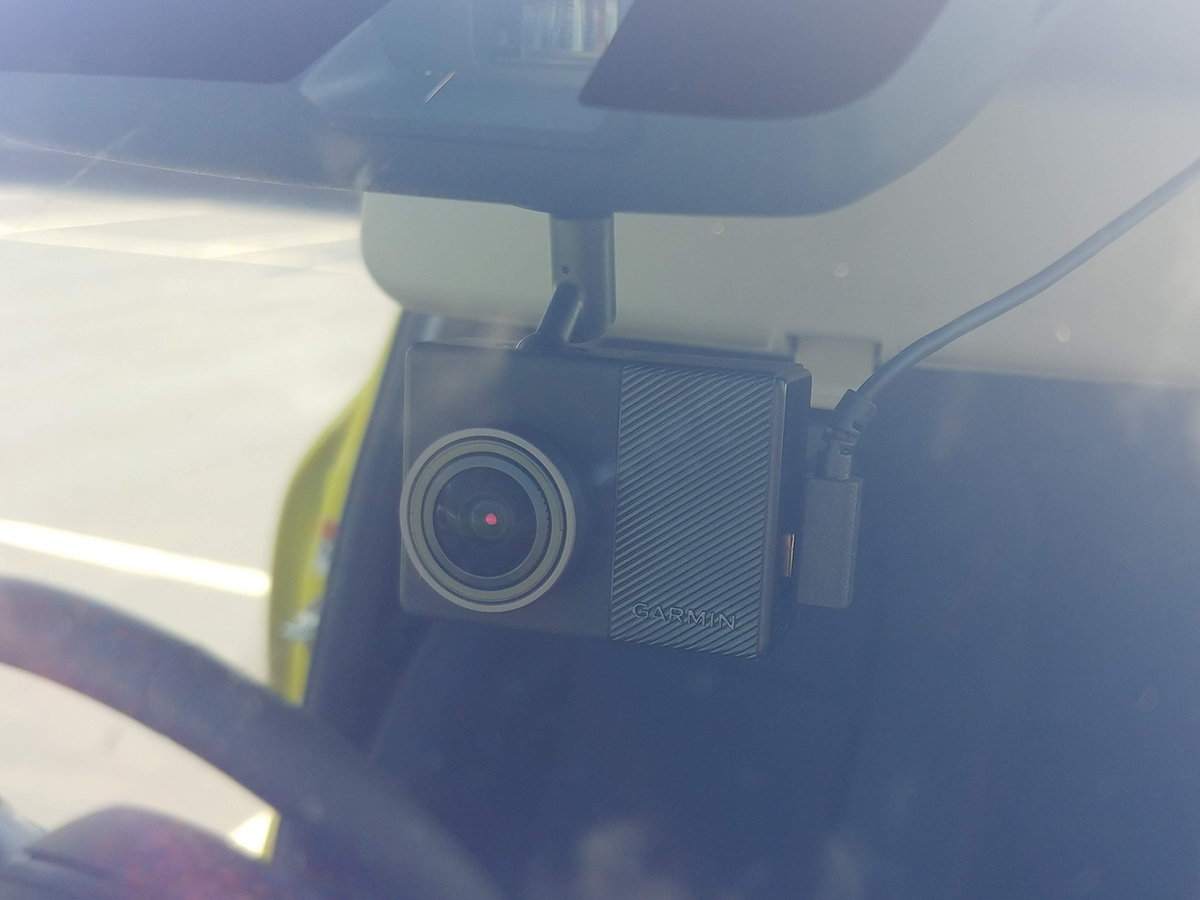
Garmin’s VIRB smartphone app should be familiar to anyone with a Forerunner watch or Edge bike computer – only here it’s just good for downloading clips from the camera without whipping out the USB cable.
After the initial setup, both gadgets connect automatically when you open the Gallery on the camera and load the companion app on your phone. It uses Wi-Fi direct, which should be convenient and quick, but instead it’s convenient and painfully slow. A five-minute 1080p clip took well over 10 minutes to transfer.
If you’ve got a microSD card reader on your PC or laptop, it’s far quicker to pop the card out of the camera and transfer files manually.
Garmin Dash Cam 65W verdict
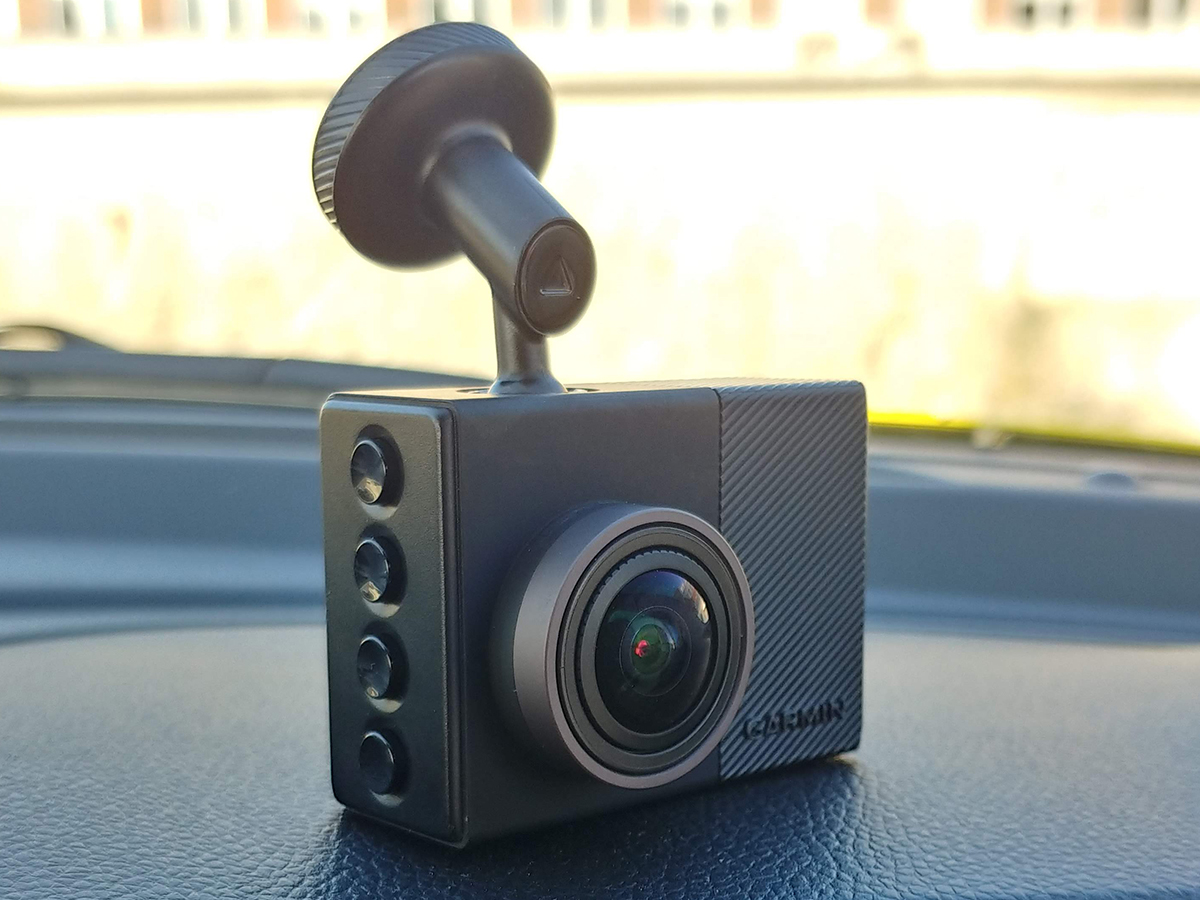
It’s not short of features, goes big on safety, and records clean footage that’ll come in handy should the worst happen and you witness/are involved in an accident. That’s pretty much all you can ask from a dash cam, so clearly Garmin has delivered.
Depending on your car, though, a lot of its safety-conscious extras are simply mimicking what your wheels are already capable of. Collision detection often lagged behind the Suzuki Swift Sport we tested it with, and the audible speed limit alerts are far more intrusive than on a sat-nav screen – good job you can mute ‘em then.
Still, for peace of mind, the Dash Cam 65W gets a lot right. It’s small and subtle, easy to install and remove, and if you don’t mind a few beeps, it keeps you safer on the road too.
Stuff Says…
A few minor irks and quirks, but the Dash Cam 65W is easy to fit and records clear footage to help you out should the worst happen when you’re out on the road.
Good Stuff
Compact, unobtrusive design
Clear, high-resolution footage with audio
Simple button controls
Bad Stuff
Irritating beeps are all too common
Voice control overly sensitive
Newer cars have more reactive safety systems

